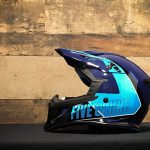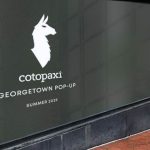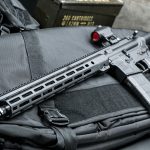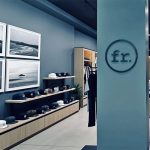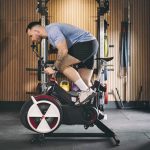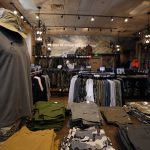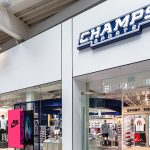The Timberland Company is starting to warm up to the idea of becoming a multi-brand platform in footwear and apparel, apparently coming to terms with the possibility that their core brand may not play as well as they would like in some of the more performance-driven categories. It appears as though the company will instead focus its Timberland brand efforts on the markets where it can succeed and then develop or acquire other brands that can benefit from TBLs capabilities in sourcing, operations, and other back-end and customer-facing core competencies.
The move cant come soon enough as the U.S. business struggles to gain much momentum from new products and categories, especially in Spring/Summer. The PRO business and Timberland brand apparel both posted double-digit growth in the second quarter, while the Outdoor Performance business and mens casual footwear business both posted some “solid gains” for the period, and the International business is thriving. But the womens casual business was not able to anniversary a strong program from last year, essentially wiping out the positives in the other categories.
Total Timberland revenues rose 2.8% excluding the benefits of currency exchange fluctuations.
The International business, which saw a 14.9% increase for the period, was driven by strong constant dollar sales gains in Europe and Asia. International posted a 10.8% constant dollar increase for Q2.
Europe posted a 14% (9% constant dollar) increase for the period, driven by continued strong growth in the U.K. and gains in key expansion markets like Scandinavia and Spain. TBL said the Europe growth came from strong footwear gains, with double-digit increases in boots and kids. They expect to expand their “boot franchise” with younger consumers in northern Europe by expanding the product offering of successful U.S. product. Growth in southern Europe (and Asia) is expected to come from more premium classic styles, such as the unconstructed six-inch boot that was a big hit in Italy this past spring.
Timberland added two specialty stores in London during the quarter. The company plans to open two more specialty stores under a new banner in the third quarter.
Asia posted a 19% (16% constant dollar) increase in Q2, driven by strong gains in Hong Kong, Taiwan, and solid growth in Japan. TBL saw strong gains across footwear and apparel/accessories.
Timberland added three new retail stores in Asia and an outlet store in Taiwan.
The total U.S. business declined 2.5% for Q2 as a small uptick in the Consumer Direct business and double-digit gains in Timberland apparel failed to offset the “anticipated decreases in footwear sales,” primarily in the womens casual business.
TBL management told analysts that U.S. sales were actually “higher than expected” due in part to an “increased level of off-price sales,” which added about 3% to the U.S. number. The resulting hit to the gross margin was the primary driver to the decline in company net income for the quarter. TBL said the company saw stronger growth in the “national athletic and discount channels” in H1, while they saw pressure on independent retailers and department stores.
Timberlands U.S. owned-retail posted a 1% comp store sales gain for the period. The company opened two new outlet stores in Q2 and plans to open four new specialty stores later this year.
The worldwide Wholesale and Consumer Direct businesses each posted 4.4% gains for the quarter, with total wholesale revenues coming in at $168.8 million and total direct posting $71.5 million in revenue. Global retail comparable store sales inched up 0.7% for the period.
Company president and CEO Jeffrey Swartz laid out the strategy for new brand extensions, announcing the creation of the Timberland Boot Company project that was described as a “utility-inspired line of footwear and apparel aimed at younger, more style conscious consumers in Europe,” a group Swartz called “blenders.” They will launch the concept with the opening of two new Timberland Boot Company stores and will be in 20 top independent retailers. The first TBC store will open in Londons East End in August.
The other project that will be launched in August is the companys new outdoor performance brand, which is called Miôn. The new brand, which was the brainchild of Martin Keen (yes, that Martin Keen), is targeted to the technical watersports category.
While some may question how the company can launch out this new brand while still supporting the current outdoor performance business, Swartz was quick to say that he was optimistic about the category. He highlighted the recent success of the Power Lounger product which is capturing mindshare on the low-tech side while product like the Cadion saw shelf space double. He did say that the lack of performance in terms of womens fashion innovation had hurt them.
Still, Swartz said he believed there are “spaces that are better served” by other brand names.
“I think that in terms of consumer and in terms of retailer, I think Mion is a better proposition against the water sports enthusiast or real hardcore user than Timberland,” said Mr. Swartz. He went on to say that Timberland had real capabilities to offer to bring these types of projects to life and said it is a “point of focus” for the company.
Projects like the Miôn brand and potential acquisitions were cited as clear opportunities for the company and its Invention Factory concept. They are able to exploit their strengths in sourcing, operations, and distribution to launch new project ideas that may come from outside. “I hope to bring you more ideas,” he said, hinting at other potential projects in the pipeline.
Miôn (pronounced my own) is expected to give Timberland a solid entry into the technical watersports footwear market. With Timberlands strong heritage in apparel, SEW suspects it should only be a matter of time before technical apparel debuts as well.
Mr. Keen is under a long-term consulting contract to design and develop the line for Timberland. He will also receive royalties under the deal. Other terms of the agreement were not released.
The initial launch of the line, which is slated for the Outdoor Retailer Summer Market, will include four key styles across three genders for a total of nine styles. The line, which has a performance sandal, a performance water shoe, a guide slide, and a pro thong, has four styles for men, four styles for women and one style for children.
Mr. Keen, reached for comment on a trip in China where he was finalizing the line, said the product is expected to ship in March 2006.
Timberland said the design inspiration comes from Martins passion for sculpture and his background in competitive sailing. Keen said the product is really designed as “equipment” rather than footwear.
He said the product goes beyond his initial idea for Keen Footwear, with its trademark toe protection, to include protective “fingers” or ribs that wrap around the users foot for enhanced protection, fit, and performance. Each rib of the structure wraps itself around the foot in critical areas to ensure that the foot is held in place to have full contact with the footbed during static and dynamic conditions.
Keen said the sculptured look of the product will be the catalyst for the consumer to be drawn to the product, but the real essence of the Miôn product rests in the industrys first customizable footbed and a unique fit system that encircles the foot in a 360 degree system that offers the user a truly customized fit as well. One-piece climbing grade spiral cord traces the Super Structure pulling it onto the foot with the precise pressure needed for each area of the foot. A special cord-lock maintains tension without constant readjustment.
He said the customizable footbed will adjust to the users foot after 10 to 15 hours of wear, depending on the users weight.
Timberland said that choice of material was of “paramount priority” with the collection ensuring durability and performance. Whats more, Miôns commitment to environmental sustainability is visible in both design and construction. The manufacturing technique employed in the Spring 06 line allows the company to generate significantly less waste versus shoes and sandals built with traditional techniques.
The performance sandal will be offered in kids sizes as well. Retail prices will range from $80 for the slide and thong to $110 for the water shoe. The kids sandal will range in price from $45-$50.
Back at Timberland, management said that new sourcing arrangements with independent suppliers impacted the inventory line, explaining that inventories would have increased just 6.3% on a comp basis without the change in when they took ownership of goods. Timberland ended the quarter with $190 million in cash and no debt outstanding.
TBL continues to forecast low- to mid-single-digit revenue growth for the balance of the year and is anticipating “relatively flat operating profits” in its base business. The third quarter is expected to be a challenge to the bottom line, driven by expected pressure on U.S. sales and gross margins that are forecast to carve 100 basis points out of company gross margins.
| The Timberland Company | |||
| Second Quarter Results | |||
| in millions | 2005 | 2004 | Change |
| Total Sales | $240.3 | $230.2 | +4.4% |
| U.S. Direct | $35.0 | $34.6 | +1.1% |
| U.S. Wholesale | $100.5 | $104.4 | -3.7% |
| Intl Direct | $36.5 | $33.9 | +7.7% |
| Intl Wholesale | $68.3 | $57.3 | +19.1% |
| Total Footwear | $177.6 | $173.4 | +2.4% |
| Total Apparel/Acc. | $59.6 | $54.7 | +9.0% |
| Gross Margins | 49.1% | 49.7% | -60 bps |
| Net Income | $6.3 | $7.9 | -19.4% |
| Diluted EPS | 9¢ | 11¢ | -18.2% |
| Inventories @Qtr-End | $216.5 | $170.9 | +26.6% |
| Accts Rec. @ Qtr-End | $130.6 | $131.9 | -1.0% |


